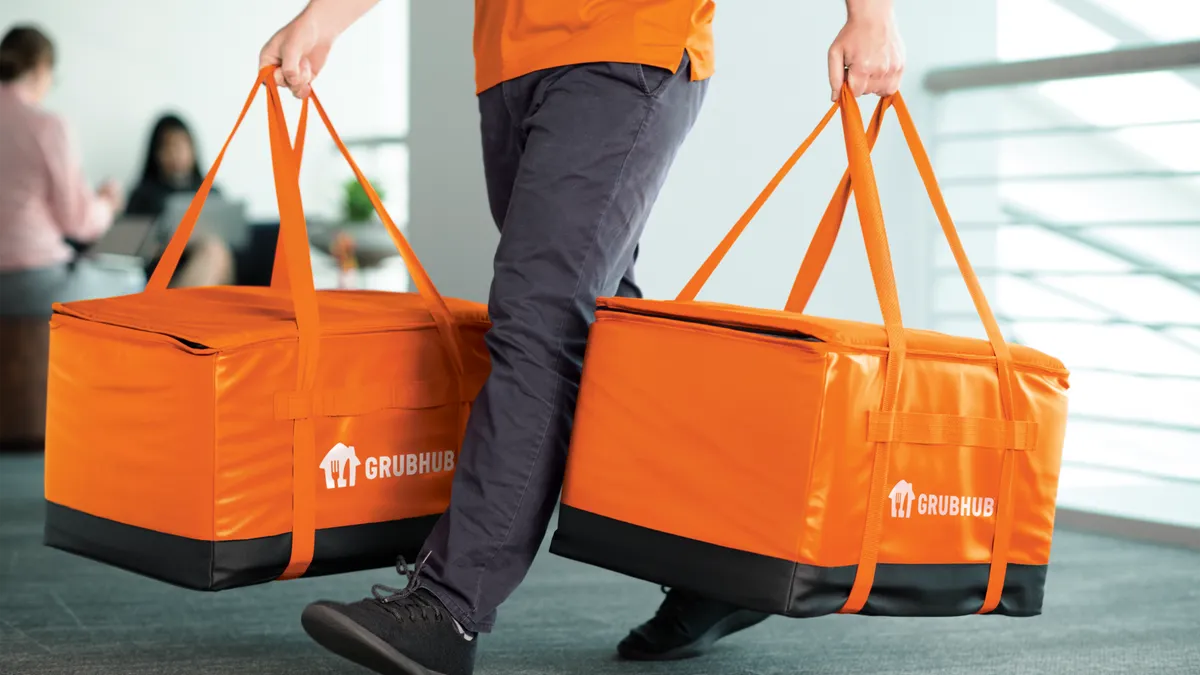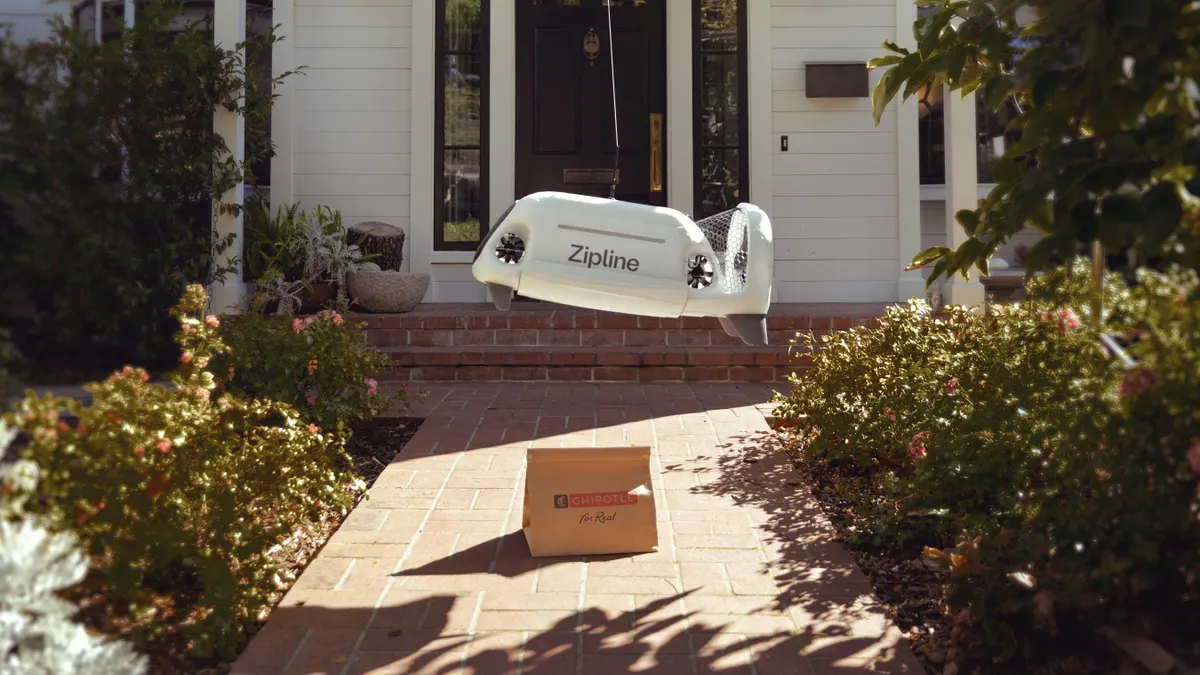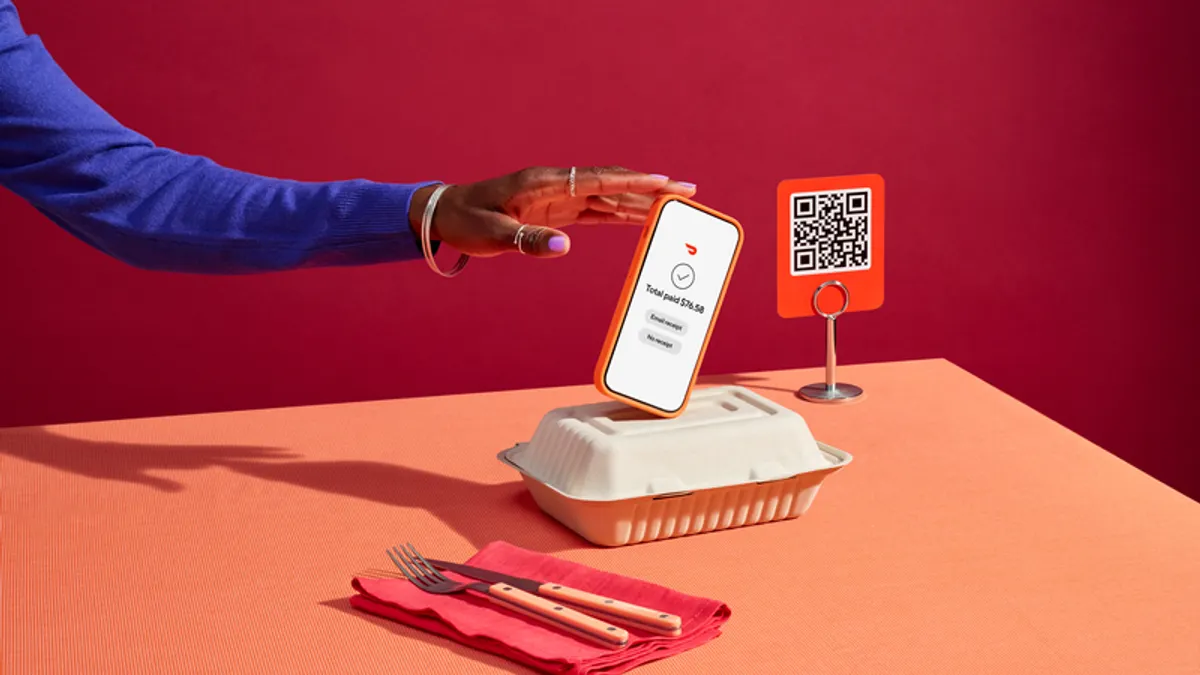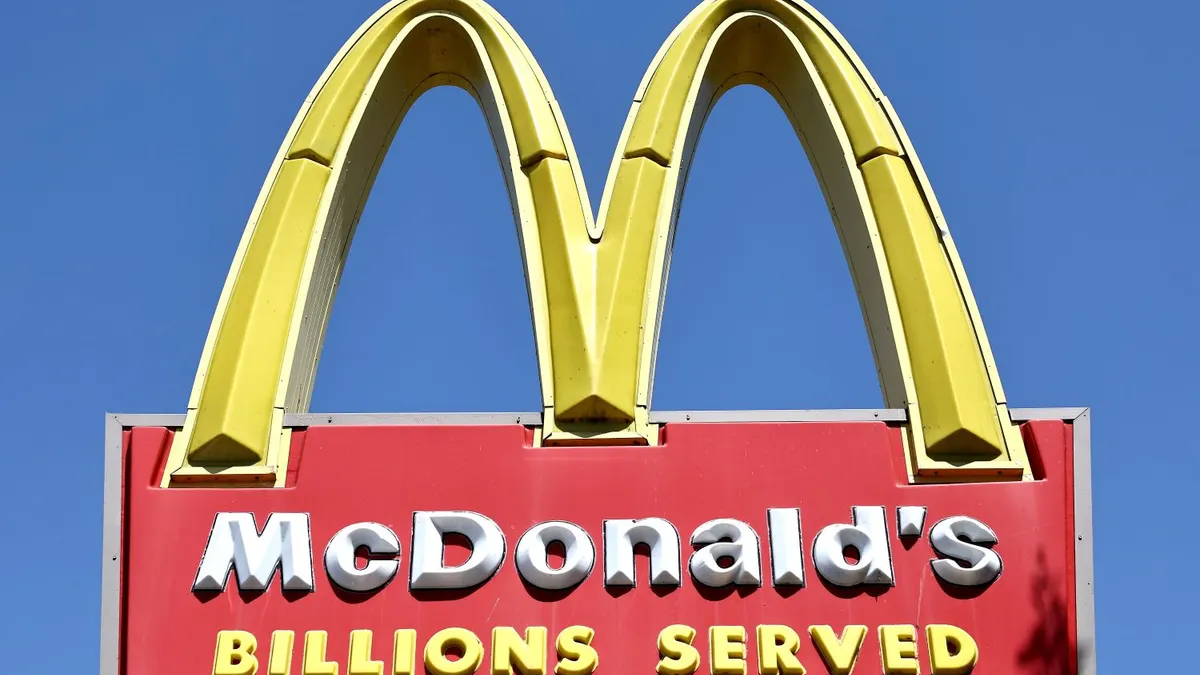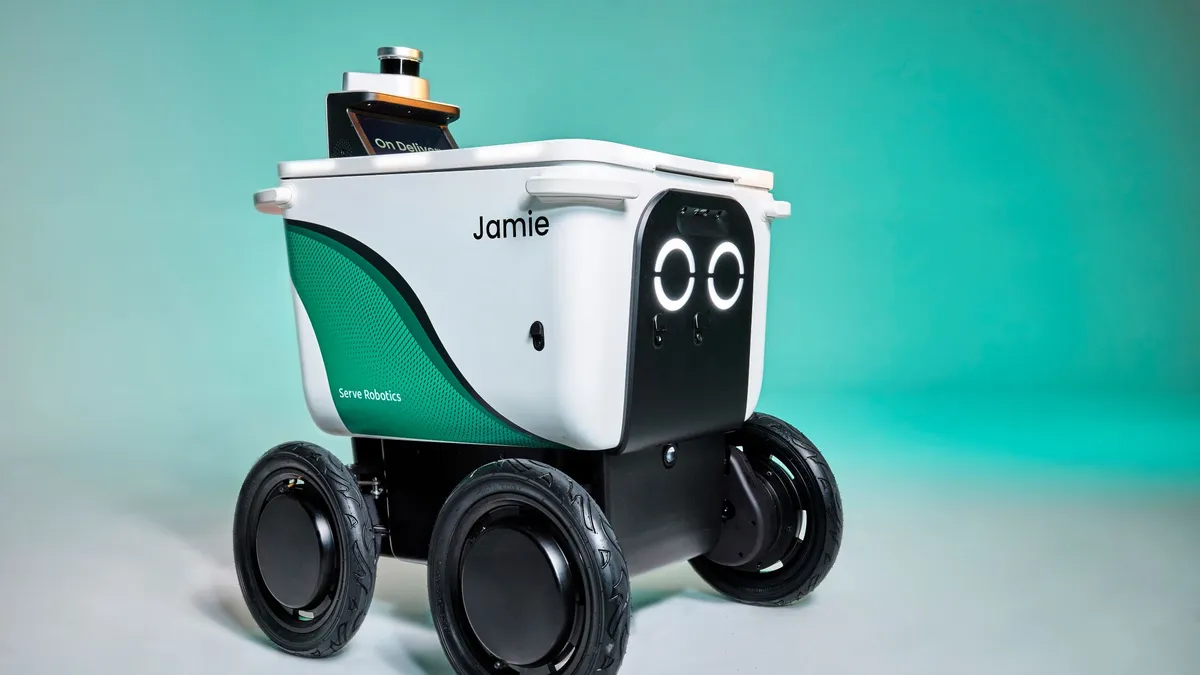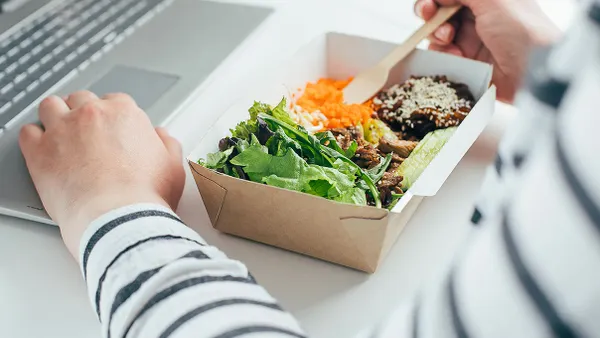If you asked Manny Hilario, CEO of The One Group, in January of last year if he would ever add an off-premise channel to his high-end steak brand STK, he would have said that offering delivery would undermine its food quality, especially since steaks don’t travel well.
"It's really amazing what happens when your restaurant gets shut down how quickly you have to give in to that thought process, but we did," Hilario said.
The pandemic meant quickly pivoting the STK menu with items that were transportable, packaging that would hold up the integrity of the food and finding ways to create the "vibe" experience The One Group is known for at home.
The One Group isn't the only high-end full-service brand forced to quickly pivot operations in light of dining room closures. Fogo de Chao had never offered off-premise options prior to the pandemic, and scrambled to get the brand online for delivery through major third-party platforms in just three days when dining room lockdowns took effect, CEO Barry McGowan said.
The shifts were necessary. Prior to the COVID-19 outbreak, 80% of full-service traffic was on-premise, according to the National Restaurant Association's 2021 Top Restaurant Trends report. Transactions at full-service chains dropped 70% in April 2020, recovering to a negative 30% in December, according to The NPD Group.
While The One Group started 2020 with comparable sales increases of 10% in January and February, sales plummeted to a decline of 55.9% during March, resulting in Q1 comparable sales declines of 14.1%. Comparable sales declined 66.7%, including a 90.2% decline in April 2020, during Q2, improving to a decline of 15.6% during Q3, according to financial releases.
Fogo de Chao was similarly positioned in January 2020, coming off of six years of positive traffic before COVID-19 restrictions rocked the 43-unit chain's financials. But the company was quick to adapt, and by October 2020 Fogo was raking in 96% of pre-pandemic revenue with an average capacity of just 60% across its restaurant locations.
Recovery for both brands was rooted in innovation traditionally not found in upscale steakhouse concepts. The challenge was developing off-premise solutions that would be robust enough to carry the companies through a prolonged period of economic instability without compromising the reason diners visit them in the first place: experience.
Adapting to an off-premise future
For Fogo, adding delivery and takeout to its touchpoints wasn't a major obstacle, McGowan said. The chain's customers weren't especially price sensitive to the cost of its delivery menu, which McGowan attributes to the fact that instead of offering single entrees, the chain offers servings for groups of multiple people for just one delivery charge through its third-party partners.
McGowan estimates that in three to four years, Fogo's off-premise business will be an incremental, $50-million business.
"It's kind of like this renaissance that's happening," McGowan said. "Convenience will become almost a mandate expectation."
Fogo's off-premise future will likely hinge on catering, however, rather than individual delivery or takeout orders. Prior to the pandemic, the chain was testing minimum catering orders of $200 at nine restaurants and the average check on these transactions was over $600.
"We're not chasing entree experiences … we think off-premise catering is going to be our biggest play," McGowan said. "We'll let everybody else trade entrees in a box for not really much margin and I would say a lot of downside risk with consumer experience."
McGowan added that when Fogo was making 96% of prior-year revenue in October, only 3% of that came from its off-premise channel, while the steakhouse's competitors' off-premise mix represents 40% to 60% of revenue, he said.
"It's kind of like this renaissance that’s happening. Convenience will become almost a mandate expectation."

Barry McGowan
CEO, Fogo de Chao
Lack of control over the last mile makes McGowan wary of third-party delivery, and he said that Fogo has entered partnerships with these aggregators out of necessity.
"I do struggle still with third-party delivering my food to somebody else," he said. "Nobody's doing anything wrong. There’s just an emotional disconnect that we at Fogo are uncomfortable with … so we're evaluating how we do this ourselves."
McGowan said that the company is currently investing in technology that will prepare Fogo to potentially make the leap into self-delivery, and said he is still evaluating how to proceed post-pandemic.
So far, the third-party delivery model has been successful for Fogo, however. The steakhouse brand finished 2020 with close to 5% of sales coming through off-premise channels, and off-premise sales peaked at around 8% during the holiday season.
"In a short nine-month period, that's generated over $10 million in revenue for us," McGowan said.
The One Group had to alter operations the most with its STK brand since Kona Grill already had a robust off-premise program, one that was heavily weighted toward its sushi menu, Hilario said. Creating an off-premise model meant going through STK's menu and figuring out what items could hold up during the 30 to 40 minutes it takes for a patron to take the meal home.
For example, the company took its popular wagyu beef and turned it into several products, such as a wagyu meatball wrap, which can withstand traveling. It also turned its popular ribs into a rib quesadilla. The company transformed its popular wagyu sliders into a $9.99 full-size cheeseburger for its takeout/delivery program. Patrons tend to start with the cheeseburger and end up ordering additional items, such as mac and cheese or a steak, Hilario said.
"Products that we've re-engineered for the takeout menu now have become the drivers of transactions," Hilario said.
The company also put a lot of thought into the kind of packaging that could maintain the integrity of the food. Its packaging is all high temperature so nothing melts in the box, Hilario said. It also added a high quality bag with branding so it wasn't a generic bag from any restaurant, he said. The packaging also needs to have sturdy knives that can cut a steak, he said.
"It's really having a forethought that what you get through delivery systems has to equal what you get in the restaurant," he said.
The One Group also created STK Radio and Kona Grill Radio, allowing customers to listen to the kind of music they would normally hear while dining in to add to the home dining experience, Hilario said.
"We’ve seen tremendous success on takeout and delivery. I think the longer we stay in the business and people get used to having STK at home on the weekends, I think that business [will do] extremely well."
The company grew its takeout business from January to December 2020 by a 3.4 times factor, Hilario said during a presentation at ICR in January.
"I now believe that takeout/delivery is a critical component to the long-term story," he said. "I'm even thinking when we open all our indoor spaces that it will help us with Friday and Saturday nights because we’re typically sold out. It will become another layer of top of our core indoor business."
Satisfying diner demand for experience in new ways
The One Group also added meal kits to its program through its STK Meat Market, which has allowed loyal customers to send steaks to family members who weren't near an STK, Hilario said. This created a new gifting opportunity and spread additional brand awareness, he said.
In addition, STK offers cooking seminars with its chefs so people know how to cook them from home, Hilario said. The company expanded the program to make it available on Amazon and on Goldbelly, he said during the ICR conference.
Following dining room restrictions, The One Group realized there wasn’t enough space to accommodate everyone on Friday and Saturday, he said. There was pent up demand for both Kona Grill and STK, so The One Group added a brunch to Saturdays as an extension of capacity, Hilario said. The company is also adding DJs — which are prominent during dinner — to brunch to add to the "vibe" experience, he said. The daypart also allows the restaurant company to introduce the brands at a lower price point without having to spend the same money customers would during the dinner experience, Hilario said.
While the company has only had the offering for a few months, Hilario said he expects this business will be a two- to three-year strategy for The One Group.
Fogo has also rolled out experience-based off-premise platforms, such as its butchery program that sells diners fresh cuts of meat to prepare at home. The chain launched new menu innovations, including porterhouse steak, wagyu steak and a ribeye wagyu to drive excitement around the offering, which McGowan said is "a big play" next to catering during the company's ICR presentation.
Fogo also sells premium bottles of wine alongside its butchery, catering and delivery orders to capture extra consumer spending and make the off-premise Fogo experience more closely resemble their steakhouse dinners in restaurants.
The chain has also launched brand licensing agreements for fresh and frozen grocery and is exploring more retail opportunities as well, McGowan told ICR attendees.
But Fogo has also been hyperfocused on maintaining a sense of normalcy in its dining rooms that are allowed to remain open and at its venues that are relying on outdoor seating.
"Those of us that are comfortable keep going out, and going out more frequently. Thirty-two of our restaurants were positive in last year's sales," McGowan said. "The only reason we're at 96% of [pre-pandemic] revenue [instead of 100%] is because in all of California we're not seating inside, we're still just out in parking lots and patios. If we had that open we would have been positive [revenue] by October."
The chain had 25 locations with dining rooms open as of January 2021, but McGowan said diner demand at these restaurants is strong. That consumer interest translates to outdoor offerings as well.
"Even in Chicago, we have four tents outside of Rosemont and it did 80% revenue of 2019 just in a tent in the freezing cold rain," he said. "I was doing 120% of revenue in Beverly Hills in a parking lot."
Where indoor service is still possible, McGowan said that indoor service operations — including serve-yourself buffets — are mostly unchanged.
"When people go out, they don't expect a COVID experience. They don't want a new normal. They want to feel normal. They get the protocols, they see it every day. So I guess when you think about strategy and innovation it's really how to execute better," he said.
McGowan said that at the start of the pandemic wait staff served food to guests directly at their tables, but diners complained that they missed serving themselves and were embarrassed to ask waiters to bring them the large amounts of meat they wanted. The company later got approval from local health departments to allow diners to serve themselves from the Market Table setup while wearing masks and gloves.
Prior to the pandemic, Fogo already ensured cutlery was washed every 15 minutes, and McGowan said local health departments said its buffet model — where protein is delivered from 800- to 1,000-degree temperatures to serving plates — is very safe because the chef who carves the meat is the only touchpoint before the consumer accesses it, McGowan said.
"We didn't shy away from what consumers wanted. We paid attention," he said. "They love the choice and variety. … They want to get up and build [their plate] on their own," he said.
Pandemic innovations will be permanent, shape future sales
Fogo will continue to offer all of its off-premise channels and new brand platforms, including its butchery program, when the pandemic ebbs.
McGowan believes these innovations will differentiate the brand from its larger and more established U.S. peers. He estimates that Fogo has 25 to 30 years of growth ahead of it because its store count is so much smaller than its rivals, which have an average of about 200 units, he said. Consumer awareness of Fogo is also only at about 40% to 42% compared to awareness of peer restaurants in the high 90 percent range, McGowan told ICR attendees.
Within the next two to three years, McGowan believes Fogo will be worth over $1 billion in value at the enterprise level.
"We feel very confident that the restaurant industry is going to come back when the vaccine comes into place," he said. "I've been asked several times, 'Do you think full-service restaurants are dissipating?' I think the ones who haven’t delivered experiences will shrink — you'll go to virtual kitchens and you’ll become a convenient play."
For The One Group, Hilario said it will focus on takeout/delivery, brunch and its STK Meat Market going forward and he doesn’t anticipate any additional pivots, especially since these three elements are still in the early stages.
"I think people that are executing and still innovating in the environment will do well coming out of [the pandemic]," Hilario said, adding that restaurants that had to cut costs and experiences and were put in a defensive position are going to have a difficult time coming out of the crisis.
Local restaurants are challenged right now and bigger brands are using this environment to shave off weaker stores, he said.
"I do think it’s going to be a bifurcated market of haves and have nots," he said









